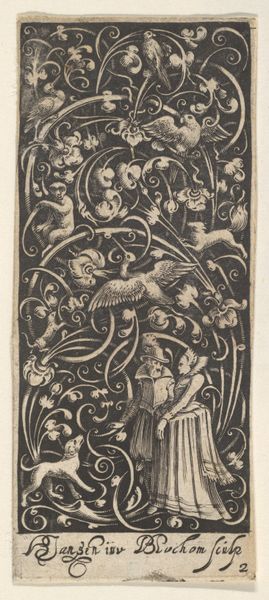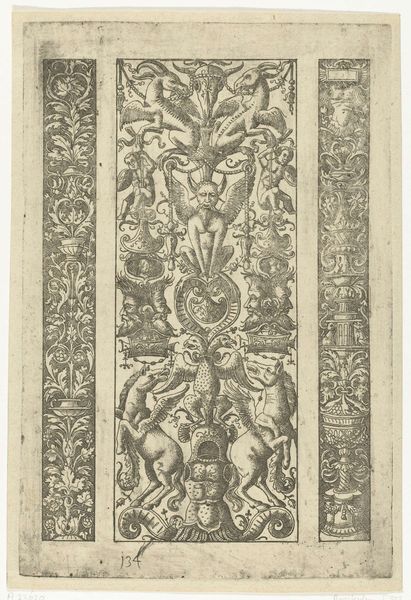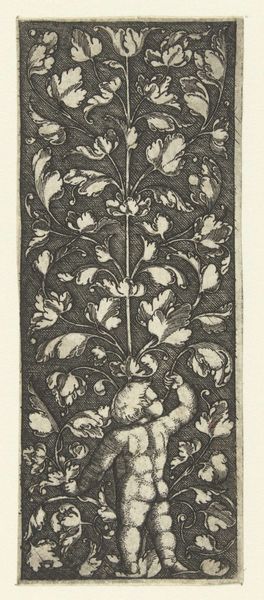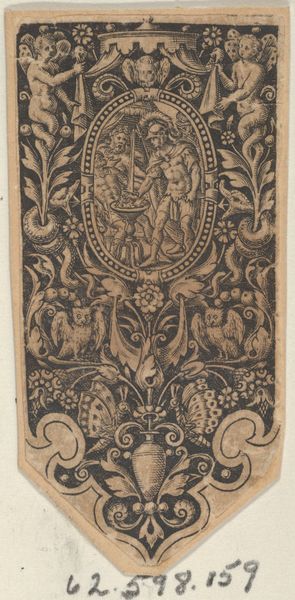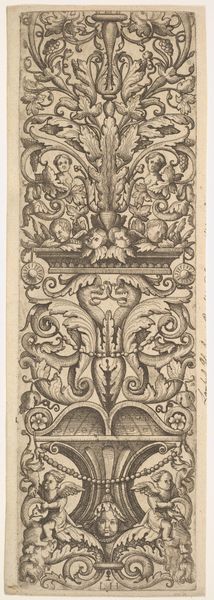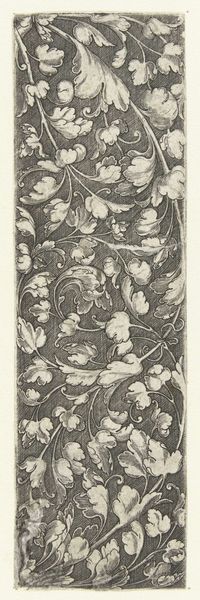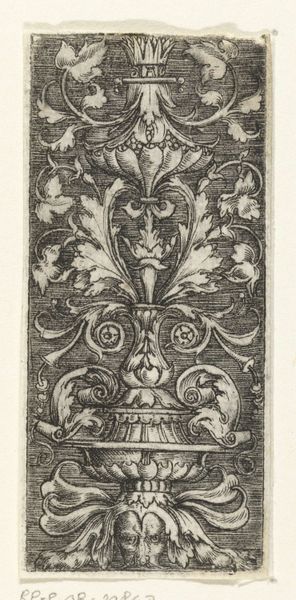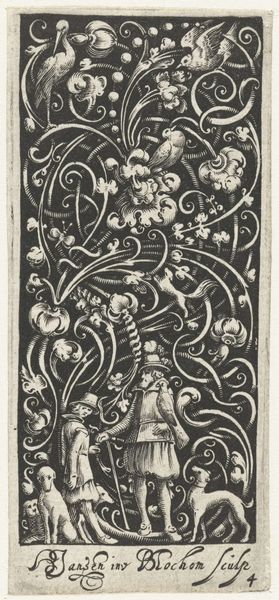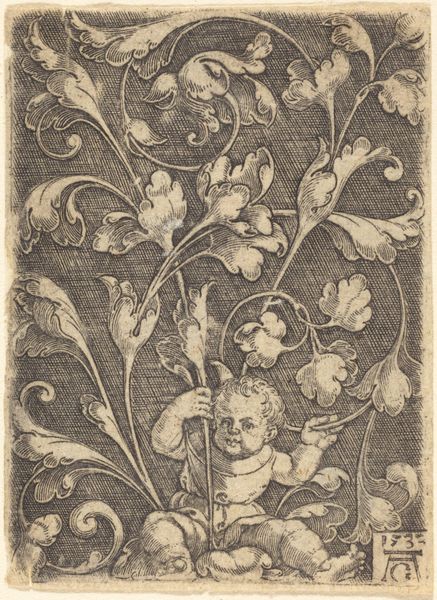
ornament, print, engraving
#
ornament
# print
#
figuration
#
form
#
11_renaissance
#
carved
#
line
#
decorative-art
#
engraving
Dimensions: height 84 mm, width 40 mm
Copyright: Rijks Museum: Open Domain
Editor: Here we have "Ornament met twee sfinxen," an engraving by Monogrammist AC, created sometime between 1520 and 1562. The detail is incredible, but the mythical creatures give it a rather unsettling feel, don't you think? How do you interpret this work, considering its time? Curator: It's important to situate this image within the context of the Renaissance and the rediscovery of classical forms and mythology. The sphinxes, hybrid creatures, symbolize knowledge and power, yet their ambiguous nature could also reflect anxieties surrounding social order and gender roles. Does their depiction align with, or challenge, established norms? Editor: I see what you mean about social order. They're half-human, half-animal, definitely blurring boundaries. And the figures themselves… their postures and expressions, what can we read from that? Curator: The sphinxes' presentation—their posture, ornamentation—are carefully constructed representations. During this period, even decorative arts subtly reinforced hierarchies. Look closely at who is adorned, who is submissive, and consider what power dynamics might be at play. How do you think this piece might function within the broader political landscape of the 16th century? Editor: So, it's not just pretty ornamentation; it's making statements about power and gender! The active and passive roles represented by the sphinxes really highlight the imbalanced gender expectations during the Renaissance. It is more than just a mythical image; it's a reflection of the era's ideology. Curator: Exactly! And by analyzing these visual cues, we gain a deeper understanding of the cultural values that shaped both the artwork and the society it inhabited. I’d say that by looking into the intersectionality between mythological symbols and prevailing power structures, we see ornament taking center stage in the historical narrative. Editor: I will definitely look at Renaissance art with new eyes!
Comments
No comments
Be the first to comment and join the conversation on the ultimate creative platform.

